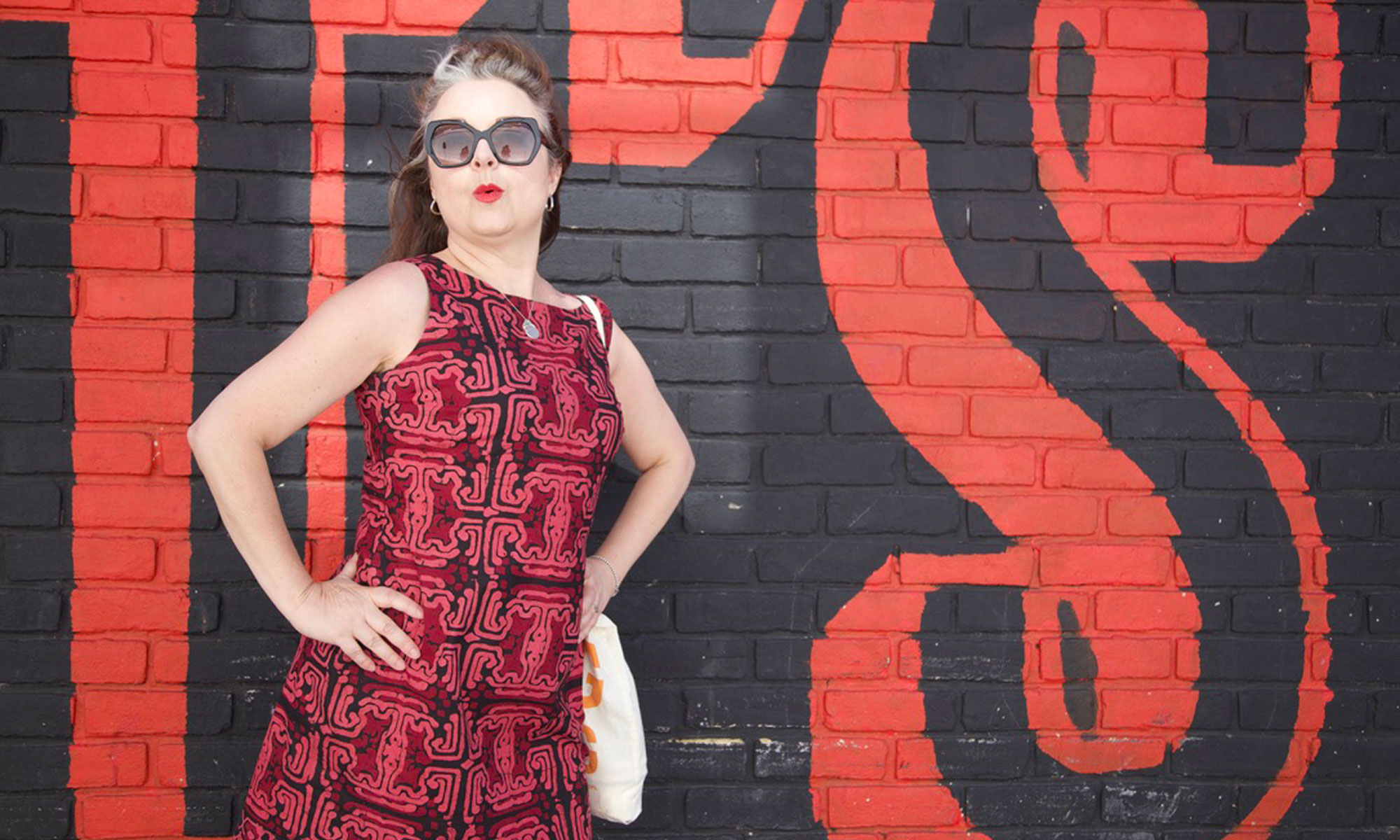
I normally steer well clear of other people’s alterations. Mostly through fear of screwing up and from past experience, lack of self-belief has led to an incredibly frustrating and stressful process. I’d sooner stick with making from scratch to fit from the off.
But I got brave last week. I succumbed to the pleading eyes of my friend who’d bought a posh dress (see above) that didn’t fit properly and she needed it urgently for a do! Classic baggy armhole syndrome! It fitted like a glove elsewhere, helped by the cut and the give of the lovely viscose crepe but in turn, that’s what highlighted the poor fit around the armscyes.
I don’t have a before or after picture of my friend wearing the dress I’m afraid, so you will have to bear with and picture the problem.
I went in with an open mind, ready to admit defeat if I thought I couldn’t fix it, but instantly set about pinning the excess to see what would happen. About 3/4 inch under the arms and 1 cm off the right shoulder – interestingly enough – et voilà!
We’re still not sure if the dress was made on the wonk or if my friend actually has one sloping shoulder. She used to be a personal shopper and regularly carried bags on her shoulder so it is a distinct possibility I guess!
The armholes and neckline were faced and the dress fully lined so I had to unpick the dress from the facing and pull the internal side seams through the hole to mark the adjustment before sewing. For RTW I was dead impressed at finding a French seam inside the lining! Though that flummoxed me a bit in terms of how I would sew it! I just sewed it anyhows and pressed the seam to the same side it sat originally. I took in the same amount from the facing. That had an open seam so it pressed nice and flat once I’d unpicked the original line of stitching. To finish, I pinched the edges together and did a tiny ladder stitch to ensure no stitches were visible.

The shoulder seam was completed in much the same way apart from an added opening I made in the shoulder seam lining to make the stitching easier. Everything was ladder-stitched up good and proper afterwards.

I also took 1 1/4 inch off the bottom. I marked and cut 3/4inch off, then made a small 1/4 inch double hem.

The only thing I’m jolly glad I didn’t do before I tackled this little project was to Google it. I hadn’t heard of Acne Studios but having been suitably impressed with the quality of this dress, I went off to investigate further. Their range is mostly not my cup of tea but there are some very stylish numbers going on… and some very hefty price tags to boot. The dress was nearly £500! And I know that she was stung for £60 duty too. So what if I’d messed up?! What if the iron had been too hot? What if I’d missed a stitch and made a hole with seam ripper? What if I’d snagged the fabric? Doesn’t bear thinking about!
Any hows. Its done. No screw ups. One very happy friend off to a very posh do. And a few more added strings to bow… phew!
Have you overcome any sewing fears recently?












